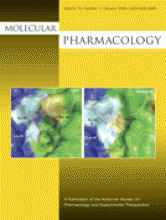Abstract
Arrestins mediate G protein-coupled receptor desensitization, internalization, and signaling. Dopamine D2 and D3 receptors have similar structures but distinct characteristics of interaction with arrestins. The goals of this study were to compare arrestin-binding determinants in D2 and D3 receptors other than phosphorylation sites and to create a D2 receptor that is deficient in arrestin binding. We first assessed the ability of purified arrestins to bind to glutathione transferase (GST) fusion proteins containing the receptor third intracellular loops (IC3). Arrestin3 bound to IC3 of both D2 and D3 receptors, with the affinity and localization of the binding site indistinguishable between the receptor subtypes. Mutagenesis of the GST-IC3 fusion proteins identified an important determinant of the binding of arrestin3 in the N-terminal region of IC3. Alanine mutations of this determinant (IYIV212-215) in the full-length D2 receptor generated a signaling-biased receptor with intact ligand binding and G-protein coupling and activation, but deficient in receptor-mediated arrestin3 translocation to the membrane, agonist-induced receptor internalization, and agonist-induced desensitization in human embryonic kidney 293 cells. This mutation also decreased arrestin-dependent activation of extracellular signal-regulated kinases. The finding that nonphosphorylated D2-IC3 and D3-IC3 have similar affinity for arrestin is consistent with previous suggestions that the differential effects of D2 and D3 receptor activation on membrane translocation of arrestin and receptor internalization are due, at least in part, to differential phosphorylation of the receptors. In addition, these results imply that the sequence IYIV212-215 at the N terminus of IC3 of the D2 receptor is a key element of the arrestin binding site.
Footnotes
-
This work was supported by United States Public Health Service grants MH045372 (to K.A.N.), GM077561 (to V.V.G.), and EY011500 (to V.V.G.), and the VA Merit Review and Career Scientist programs (to K.A.N.).
-
ABBREVIATIONS: GPCR, G protein-coupled receptor; GRK, G protein-coupled receptor kinase; GST, glutathione transferase; HEK, human embryonic kidney; ERK, extracellular signal-regulated kinase; D2-A4, IYIV212-215A4 mutant of the rat dopamine D2L receptor; IC3, third intracellular loop of a GPCR; D2-IC3, third intracellular loop of the rat dopamine D2L receptor; D3-IC3, third intracellular loop of the rat dopamine D3 receptor; PVDF, polyvinylidene difluoride; TBS, Tris-buffered saline; CMF-PBS, calcium- and magnesium-free phosphate-buffered saline; CHAPS, 3-[(3-cholamidopropyl)-dimethylammonio]-1-propanesulfonate; TBST, Tris-buffered saline/Tween 20; PTX, pertussis toxin.
- Received July 11, 2008.
- Accepted September 19, 2008.
- The American Society for Pharmacology and Experimental Therapeutics
MolPharm articles become freely available 12 months after publication, and remain freely available for 5 years.Non-open access articles that fall outside this five year window are available only to institutional subscribers and current ASPET members, or through the article purchase feature at the bottom of the page.
|






